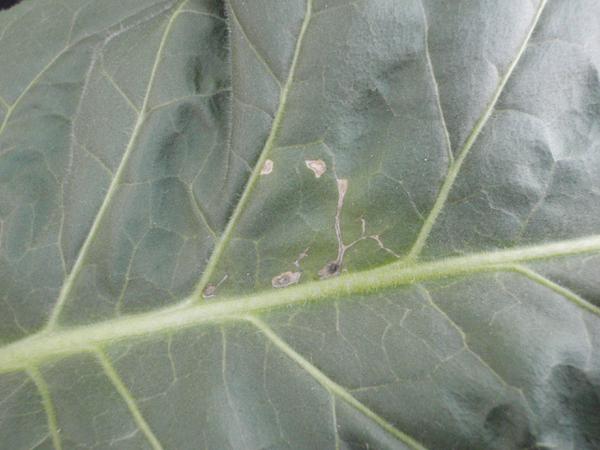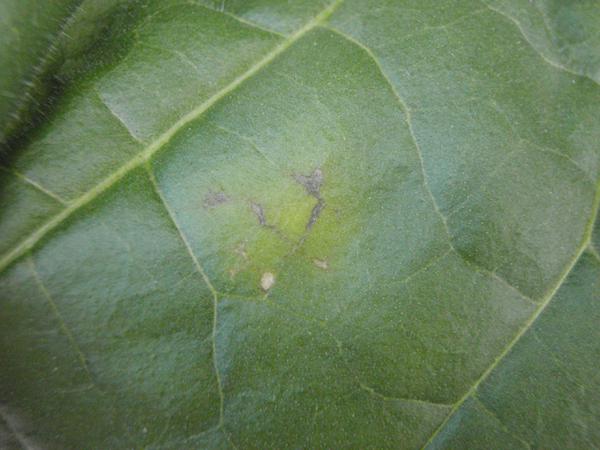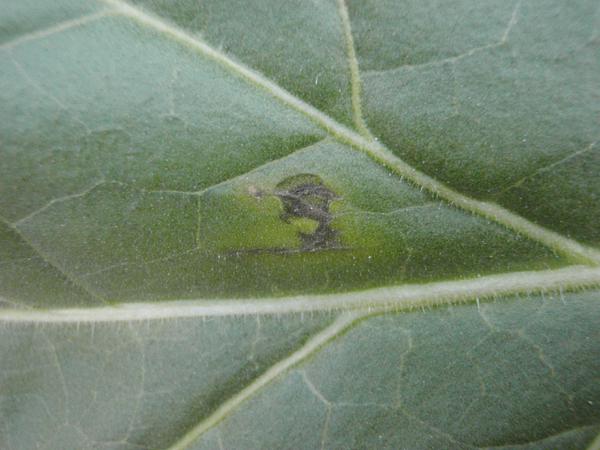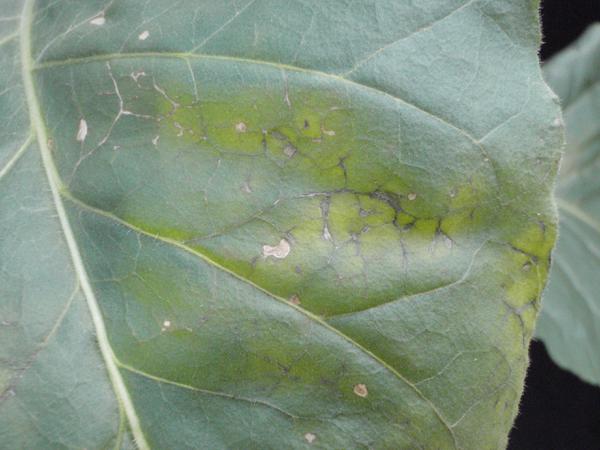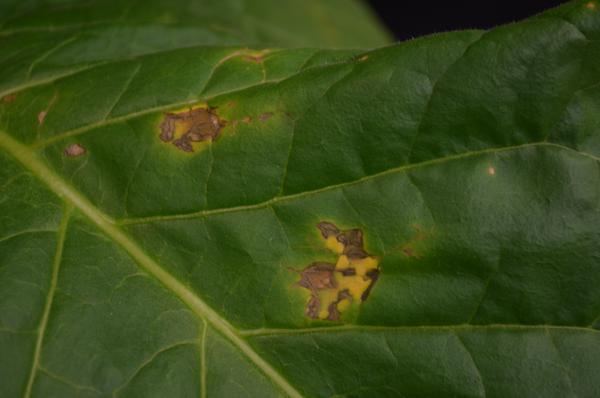Problem
Nutritional disorder – copper (Cu) deficiency.
Symptoms
Copper (Cu) deficiency is extremely rare, consequently it is not normally seen in field conditions. To help with the diagnosis and treatment of copper deficiency, we induced copper stress under controlled greenhouse studies.
In NC State University trials, symptoms first developed in the middle part of the plant. The middle region of the leaf developed brown veins, which quickly turned black (Figure 1, Figure 2, Figure 3, Figure 4). The tissue surrounding the veins became chlorotic. Symptoms progress up the plant to the younger leaves.
(Descriptions based on the book, Hunger Signs of Crops, 3rd Edition, edited by H.B. Sprague.) Under controlled greenhouse conditions, tobacco plants are stunted when Cu is limited. The upper foliage of the plant may also have a wilted appearance. The upper part of the plant lacks rigidity and when flowering the stalk will bend over. In ornamental tobacco (Nicotiana alata), the initial symptoms were an overall yellowing of the foliage in conjunction with overall dwarfing. Advanced symptoms can be seen in Figure 5 and Figure 6.
Similar Problems
None reported.
Additional Information
Copper is required is very low concentrations, so deficiencies under field conditions is unlikely. If you suspect a copper deficiency, take a sample for analysis.
Diagnostic Tips
The sufficiency range for copper is between 5 and 10 ppm for burley tobacco. A slight refinement of the range is available for flue cured tobacco, with 5 to 10 ppm copper being recommended from planting until maturity, and a lower range of 4 to 10 ppm recommended at harvest for the middle leaves or 3 to 10 ppm for the lower leaves.
Corrective Measures
Provide copper with your fertilization program.
Management
Provide copper with your fertilization program.
Funding Source
Funding was provided in part by the North Carolina Tobacco Foundation.
Project Team
Josh Henry (NC State M.S. student in Horticultural Science), Paul Cockson (NC State B.S. student in Agroecology), Ingram McCall (Research Technician in Horticultural Science), Rhonda Conlon (Extension IT at NC State), Matthew Vann (Tobacco Extension Specialist, Dept. of Crop and Soil Sciences), and Brian Whipker (Professor of Floriculture and Plant Nutrition in Horticultural Science).
Publication date: Jan. 1, 2017
NC Cooperative Extension prohíbe la discriminación por raza, color, nacionalidad, edad, sexo (incluyendo el embarazo), discapacidad, religión, orientación sexual, identidad de género, información genética, afiliación política, y estatus de veteran.
The use of brand names in this publication does not imply endorsement by NC State University or N.C. A&T State University of the products or services named nor discrimination against similar products or services not mentioned.
Recommendations for the use of agricultural chemicals are included in this publication as a convenience to the reader. The use of brand names and any mention or listing of commercial products or services in this publication does not imply endorsement by NC State University or N.C. A&T State University nor discrimination against similar products or services not mentioned. Individuals who use agricultural chemicals are responsible for ensuring that the intended use complies with current regulations and conforms to the product label. Be sure to obtain current information about usage regulations and examine a current product label before applying any chemical. For assistance, contact your local N.C. Cooperative Extension county center.
N.C. Cooperative Extension prohibits discrimination and harassment regardless of age, color, disability, family and marital status, gender identity, national origin, political beliefs, race, religion, sex (including pregnancy), sexual orientation and veteran status.

